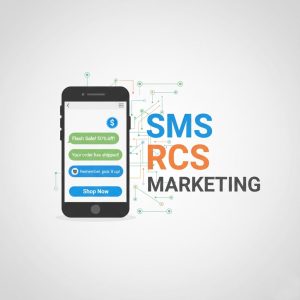Unlocking Success With Mobile Funnel Optimization

Mobile traffic now accounts for more than 60% of online visits, yet conversion rates on mobile often lag behind desktop. The culprit? Poorly optimized mobile funnels that create unnecessary friction and drive potential customers away.
This blog will demystify mobile funnel optimization, guiding you through key strategies to ensure a seamless user experience and maximize conversions. By the end of this post, you’ll know exactly what mobile funnel optimization entails, why it’s critical for your business, and how to implement actionable changes that yield results.
What Is Mobile Funnel Optimization?
Think of your sales funnel as a pathway that users follow before completing a desired action, whether it’s making a purchase, signing up for your newsletter, or filling out a contact form. Mobile funnel optimization (MFO) is the process of improving this pathway to remove unnecessary obstacles for users accessing your site through a mobile device.
With smaller screens, touch interfaces, and often limited connectivity, mobile users interact with your content differently. Mobile funnel optimization ensures the experience is tailored to these unique challenges, keeping your visitors engaged from start to finish.
Why Is Mobile Funnel Optimization Important?
Underestimating the importance of mobile optimization can significantly impact your bottom line. Whether you’re an e-commerce store, SaaS company, or content creator, the following points drive home why mobile optimization is no longer optional but essential:
1. Mobile Users Are the Majority
Statista reports that more than 58% of global website traffic comes from mobile devices. If your funnel doesn’t cater to this audience, you’re effectively leaving money on the table.
2. Mobile Conversions Lag Behind Desktop
While mobile traffic dominates, mobile conversions are 1.5x lower than desktop on average. Without optimization, this gap widens, costing you valuable leads and sales.
3. Enhanced User Experience Improves Retention
Read our latest blog : Design emails for Mobile Users
A smooth mobile experience encourages customers to stay longer, engage more, and recommend your business to others. Forbes reports that 89% of customers will switch to a competitor after a negative user experience.
Key Steps for Mobile Funnel Optimization
Step 1 Optimize Page Loading Speed
Slow-loading pages are conversion killers. A study by Google reveals that 53% of mobile users leave a site if it takes over three seconds to load.
How to Improve Loading Speed:
- Compress Images: Use tools like TinyPNG to reduce file sizes without compromising quality.
- Implement Lazy Loading: Only load images as users scroll, speeding up the initial page load.
- Minify Code: Clean up your HTML, CSS, and JavaScript to improve performance.
Step 2 Simplify Your Design
Minimalist, clutter-free designs perform best on mobile. Avoid overwhelming users with excessive text or imagery.
Tips for Simplification:
- Use White Space: Give your content room to breathe for better readability.
- Focus on Key CTAs: Avoid multiple call-to-action (CTA) buttons that can overwhelm users.
- Readable Fonts: Stick to at least 14-16px font sizes for body text.
Step 3 Optimize Forms for Mobile
Forms are often crucial touchpoints in the conversion funnel. A poor form design can be a significant hurdle for mobile users.
Mobile-friendly Form Best Practices:
- Use Fewer Fields: Only ask for essential information.
- Enable Autofill: Reduce manual typing with form field autofill suggestions.
- Use Large Tap Targets: Buttons must be easy to click, even on smaller screens.
Step 4 Create Seamless Navigation
Intuitive navigation ensures your users don’t feel lost on mobile and can find what they need in seconds.
Improve Navigation:
- Use Hamburger Menus: Collapse your navigation into a touch-friendly menu.
- Sticky Navigation Bars: Keep key options accessible as users scroll.
- Breadcrumbs: Help users retrace their steps effortlessly.
Step 5 Prioritize Responsive Design
Responsive design ensures your website adapts to various screen sizes, providing a cohesive experience on any device.
Use Google’s Mobile-Friendly Test Tool (developers.google.com) to check if your website is responsive and get actionable recommendations.
Step 6 Leverage Data to Optimize Further
Mobile funnel optimization isn’t a one-time effort. Regularly collect data to identify areas of improvement.
Tools for Data Analysis:
- Google Analytics: Get insights into mobile bounce rates, session lengths, and user behavior.
- Heatmaps: Services like Crazy Egg and Hotjar show where users are clicking (or not) on your mobile pages.
- A/B Testing: Test different layouts, CTAs, and other elements to determine what works best.
Bonus Tips for Mobile Funnel Optimization
- Leverage Push Notifications: Use smart notifications to engage users who didn’t convert immediately.
- Mobile Payment Options: Integrate payment gateways like Apple Pay and Google Wallet for frictionless transactions.
- Text-Friendly Copy: Keep your message concise and engaging, ensuring it grabs attention on small screens.
Build a Better Mobile Experience Today
Mobile funnel optimization ensures your business keeps pace with the shifting digital landscape. By refining your mobile funnels, you can remove friction, improve user experience, and maximize conversions.
But optimizing for mobile doesn’t have to be overwhelming. Start small by focusing on one or two strategies from this guide, then build on those improvements over time.
Looking for more ways to improve your funnel performance? Stay tuned for our latest updates and expert insights to continuously refine your mobile optimization strategy.





